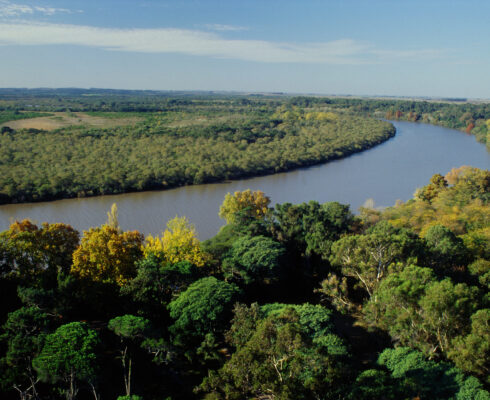Challenge
To develop and implement a biological monitoring program with criteria to demonstrate ecosystem recovery subsequent to major remediation efforts.
Background
The Blackbird Mine (currently inactive) is situated in east central Idaho, USA. Two Panther Creek tributaries, Blackbird Creek and Big Deer Creek, are the primary receivers of mine drainage.
Prior to mine development, Panther Creek supported abundant populations of anadromous Chinook Salmon (Oncorhynchus tshawytscha) and steelhead (O. mykiss). During operations (1948 to 1967), metal enriched mill effluents and tailings frequently entered Blackbird Creek, and were transported downstream to Panther Creek. By the mid-1950s, the salmon were in decline in Panther Creek as water quality problems worsened. Spawning redds were not observed after 1962 and fish were not observed in Panther Creek downstream of Blackbird and Big Deer Creeks after 1967. Reintroduction efforts of steelhead and Chinook Salmon in the 1970s and 1980s were unsuccessful.
Concerted efforts to restore water quality began in 1995, including a variety of measures to divert clean water around disturbed areas, and to intercept, collect, and treat contaminated water.
 The Ecometrix team
The Ecometrix team
Project
In 2002, subsequent to completion of the major remediation, a biological monitoring program was initiated. The program involved the collection and analysis of biological, chemical and physical data, including the collection of quantitative fisheries and benthic community data. Data were analyzed using an ecological assessment approach developed by the Department of Environmental Quality to determine coldwater aquatic life use support. The framework uses ecological indicators with multimetric indices to gauge the overall health of the aquatic ecosystem. In 2022, the 15th biomonitoring study undertaken over the past 20 years was completed at the Blackbird Mine.
Outcome
Results demonstrate full ecosystem recovery in Panther Creek, with self-sustaining resident and anadromous salmonid populations. Conditions in Big Deer Creek and Blackbird Creek continue to improve.
The long-term collection and analysis of biological, chemical and physical data clearly demonstrate the temporal ecosystem recovery that has occurred as a result of the remedial efforts.
The findings from this biological monitoring program were published in a paper titled “Recovery of a mining-damaged stream ecosystem”.







